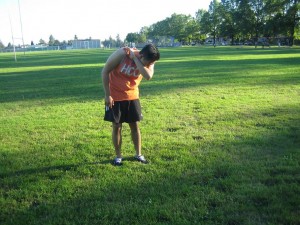Hay fever is also called allergic rhinitis which is the reaction of the body to an allergen such as pollen, dust or mold. It has symptoms such as sneezing, runny nose, congestion and itching and they last longer than a common cold. The allergens that cause hay fever include grass, pollen, ragweed and mold.
Allergies happen when a person comes in direct contact with a substance that his/her immune system will detect as a threat, even if they do not cause harm. The immune system of the body will strongly react and cause uncomfortable symptoms of allergy. Infants and small children are most susceptible to this condition.
Common symptoms of hay fever
- A tickly sensation can be felt in the nose
- Runny nose
- Swelling, red and itchy watery eyes
- Prolonged and repeated sneezing
- Stuffy nose
- Hives
Hay fever can cause severe sore throat or infection of the throat and people suffering from hay fever are also susceptible to asthma and usually happen during the hay fever season. Hay fever can also be caused by heredity and it usually occurs among children suffering from asthma or eczema.

Air pollution or exposure to second-hand smoke can cause hay fever among children and also cause sinus infections and ear infections and worsen the existing respiratory disorders in both adults and children.
Other causes of hay fever
- Pollen coming from different varieties of trees
- Reaction to grass pollen
- Spores from fungi and molds coming from ragwort
Treatment and home remedies for hay fever
- Close the doors and windows during pollen season and avoid hanging clothes outside in order to prevent sticking of pollen on the sheets and towels.
- Use an allergy filter in the ventilation system.
- Install a dehumidifier to help in minimizing the indoor humidity.
- Avoid mowing the lawn or raking dry leaves which can stir up the pollen and mold.
- Wash clothes, sheets and blankets in water that is heated at least at 130 F.
- Remove carpeting during sleeping helps in minimizing the dust mites.
- Wash the dishes after use and empty garbage cans every day.
- Cover any cracks and crevices in order to prevent cockroaches from entering the house.
- Keep food, pet food in covered or sealed containers.
- If possible, remove pets from the house.
- Bathe the pet every week and use wipes to help minimize the dander
Other remedies
- Drink green tea since it has plenty of oxidants and helps heal hay fever and prevent a secondary infection.
- Maintain a healthy and balanced diet in order to avoid a secondary infection. Foods to add in the diet include fish such as herring, salmon and tuna since they have anti-inflammatory properties that help with the healing. Eat a variety of fruits and vegetables but avoid tomatoes and oranges since they can make the condition worse.
- Sip plenty of warm soups and broths to help to lessen respiratory problems and expel excess nasal mucus.
